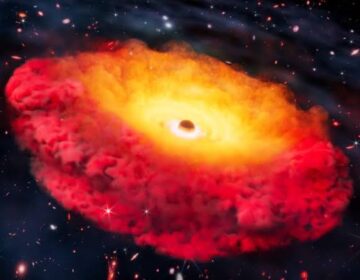Imagine setting off in a rocket and leaving Earth. Leaving the solar system.
Leaving our galaxy. Breaking through the edge of the observable universe and leaving our cosmos behind (which would be impossible, as you’d have to go faster than the speed of light, but work with me here).
Imagine a gamma ray laser that safely eliminates cancer cells while leaving healthy tissue unharmed.
A University of Colorado Denver engineer is close to providing researchers with a powerful new tool that could bring science fiction concepts closer to reality.
Consider the potential of a gamma ray laser that can precisely destroy cancer cells without harming nearby healthy tissue.
Or a device capable of probing the structure of the universe to test theories like Stephen Hawking’s idea of the multiverse.
Assistant Professor Aakash Sahai, PhD, from the Department of Electrical Engineering, has made a quantum-level advancement that could support the development of such possibilities.
His discovery has generated significant interest in the quantum science community for its potential to transform the fields of physics, chemistry, and medicine.
His work was highlighted on the cover of the June issue of Advanced Quantum Technologies, a leading journal in quantum materials and research.







